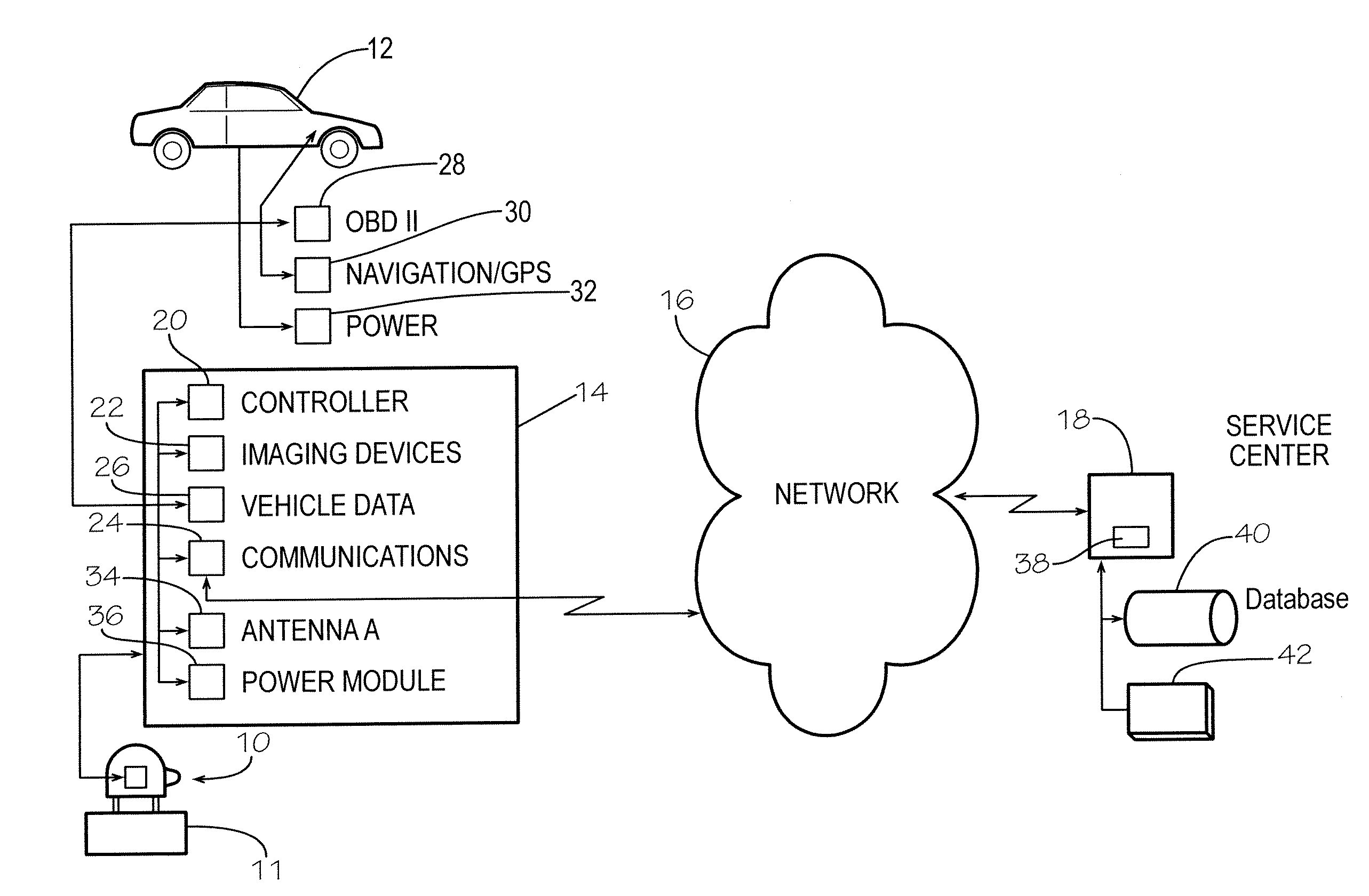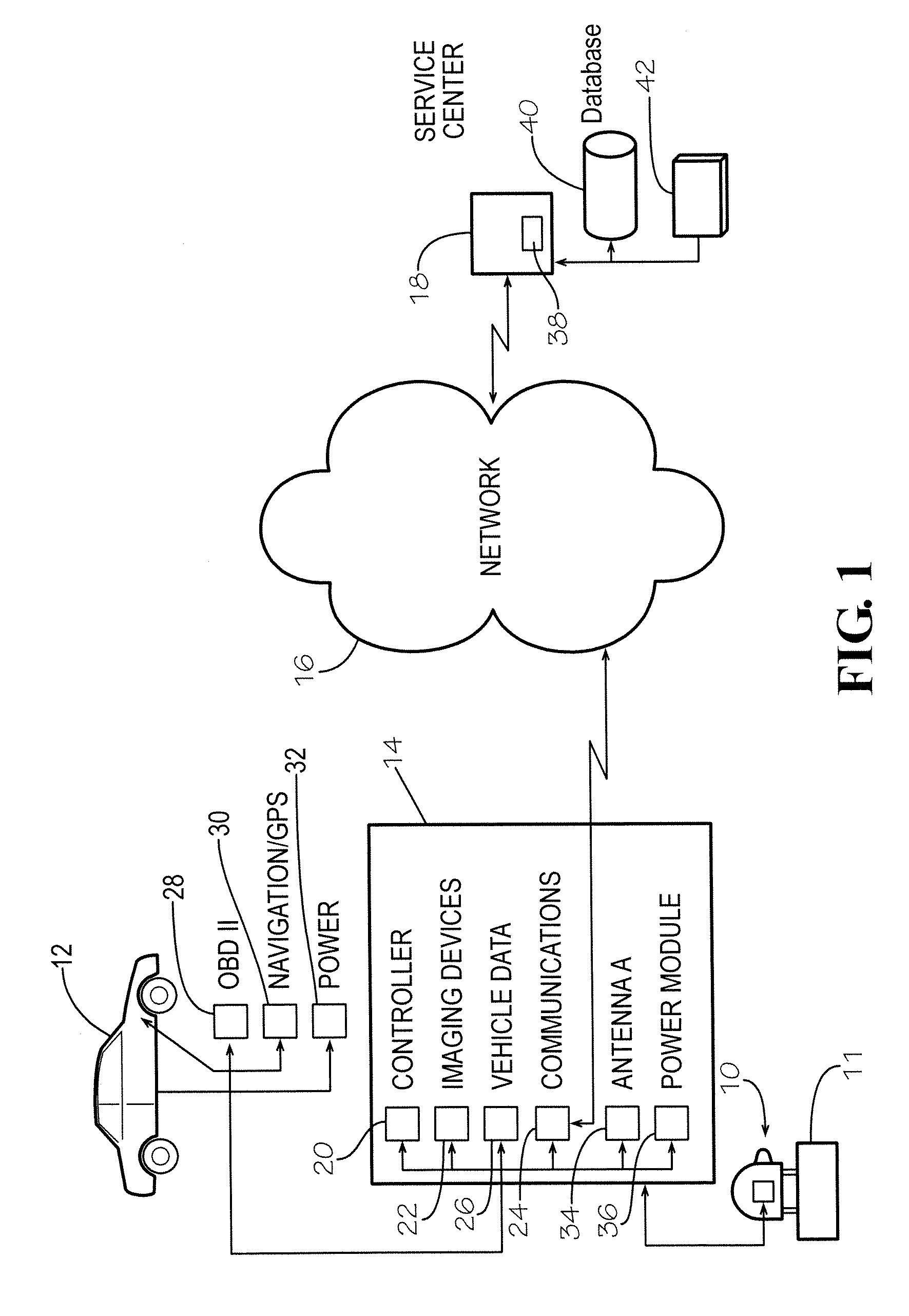Modular Connected Headrest
a headrest and module technology, applied in the field of headrests, can solve the problems of inability to improve the safety of the driver and passenger occupants, the difficulty of interconnection between the current apparatus providing video/audio imaging and the vehicle performance monitoring device, and the structural difficulty of placing the imaging device or camera, so as to achieve the effect of reducing the number of antennas
- Summary
- Abstract
- Description
- Claims
- Application Information
AI Technical Summary
Benefits of technology
Problems solved by technology
Method used
Image
Examples
first embodiment
[0018]FIG. 2 illustrates in front view the modular connected headrest 10 that engages the seat 11 of the motor vehicle 12. The headrest 10 may be a conventional OEM headrest modified to incorporate the structural components of the modular connected headrest in accordance with the present invention. The headrest 10 includes a head cushioning front face 44 and opposing back face with opposing sides. A pair of tubular members 46 extend from the headrest frame for being received in aligned support sleeves 48 mounted in the seat 11.
[0019]A board 50 mounts rigidly within the headrest 10. The various required and optional components attach to the board 50, including the power module 36 that distributes current to operate the components. A wiring harness 52 attaches the board 50 for supplying current to the power module 36. The wiring harness 52 extends through one of the tubular members 46 into the back of the seat 11. An opposing distal end of the wiring harness 52 detachably connects wit...
second embodiment
[0021]FIG. 3 illustrates in side view the modular connected headrest 10 for the motor vehicle illustrated in FIG. 2. In this embodiment, the external antenna 66 mounts to a side of the headrest opposing the arm 64. The antenna 66 includes one or more global positioning satellite (GPS) antenna, cellular, wi-fi, or other communications transmitting and receiving apparatus for communicating signals for video, audio, digital image, vehicle operational data, and other sensed and imaged information relating to the motor vehicle, its operation in time periods, and the circumstantial surroundings such as roadway, traffic, weather conditions proximate the motor vehicle during operation.
[0022]FIG. 4 illustrates in partial cut-away view a second embodiment of a modular connected headrest 80 for aftermarket retro-fit installation in a motor vehicle. The modular connected headrest 80 provides an open-ended sleeve 82, helmet, or tube that receives the conventional headrest 84 installed by the OEM...
PUM
 Login to View More
Login to View More Abstract
Description
Claims
Application Information
 Login to View More
Login to View More - R&D
- Intellectual Property
- Life Sciences
- Materials
- Tech Scout
- Unparalleled Data Quality
- Higher Quality Content
- 60% Fewer Hallucinations
Browse by: Latest US Patents, China's latest patents, Technical Efficacy Thesaurus, Application Domain, Technology Topic, Popular Technical Reports.
© 2025 PatSnap. All rights reserved.Legal|Privacy policy|Modern Slavery Act Transparency Statement|Sitemap|About US| Contact US: help@patsnap.com



